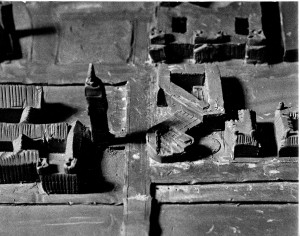In 1971 I entered a competition for an addition to the British Houses of Parliament. My design blended Aalto with Le Corbusier—my two heroes. In hindsight, the large complicated project was far beyond my pay grade, but I was ambitious. Still, whatever in the world made me decide to do all the area calculations for the complicated building on an abacus? Cheap pocket calculators did not become popular until the mid 1970s, but still! I didn’t win the competition, but I still have the abacus. I remember the pleasant clickety-click of the wooden beads. I’ve never had such a fond memory of a pocket calculator.

I thought of my abacus when I read my friend Andres Duany’s recollections of student life at the Ecole des Beaux-Arts in Paris (in 1970-71). His essay is in Windsor Forum on Design Education. The writing is a witty, sardonic, perceptive (vintage Duany) take on architectural education. He describes the atelier, where shared drafting tables were regularly dismantled and assembled as needed.
“Needless to say there were no attached parallel rulers, only T-squares. Remember the thrill of walking around the streets carrying that incredibly charismatic instrument! And the pleasure of the visceral click as the T-square was snapped into orthogonal alignment before every line was drawn. And twirling and slapping down triangle and scale. And the ritual of systematic dismantling and cleaning the Rapidograph ink pens before final drawings, like soldiers checking their equipment before the assault. How much more satisfying than the effeminate typing on a keyboard, the sleazy sliding of the mouse followed by the infantile, gurgling and cooing of the computer! Forgive the nostalgia, but I am gripped by what has been taken from us by modernity!”
Amen.

Many of us still need to smell paint and hear the sound of the brush.
That’s the difference between architects and engineers. I have very fond memories of my TI-55-II, and I still feel my heart race when I talk about my old Casio CFX-200 SCIENTIFIC calculator watch.